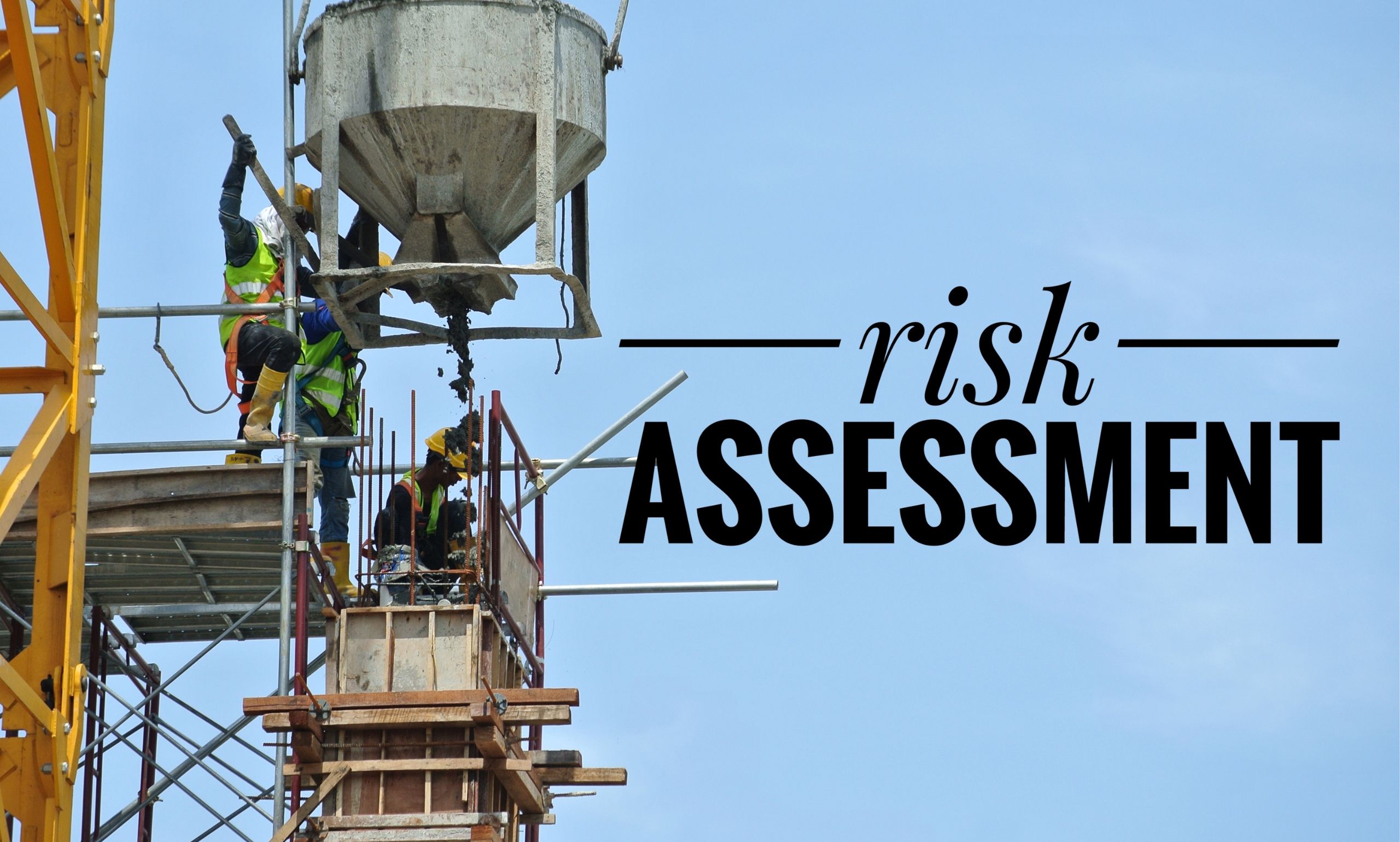A risk assessment is a crucial step in ensuring the safety and health of employees in the workplace. It involves identifying potential hazards and assessing the risks associated with them. But how often should you conduct a risk assessment? Is an annual review enough, or are there times when a more frequent review is necessary?
According to the Health and Safety Executive (HSE), a risk assessment should be carried out “every time there are new machines, substances, and procedures, which could lead to new hazards.” This means that if there are any changes in the workplace that could introduce new hazards, a risk assessment should be conducted to identify and mitigate those risks. Additionally, regular reviews should be conducted to ensure that the risk assessment remains relevant and up-to-date.
However, the frequency of these reviews will depend on the nature of the workplace and the hazards present. For example, a high-risk workplace such as a construction site may require more frequent reviews than an office environment. Ultimately, it is the responsibility of the employer to ensure that risk assessments are conducted regularly and that any necessary updates are made to ensure the safety and health of employees.
Understanding Risk Assessment

Risk assessment is a systematic and structured process of identifying and evaluating potential hazards and the risks associated with them. It is an essential tool for risk management and ensuring the health and safety of employees and others.
The process of risk assessment involves several steps, including hazard identification, risk analysis, and risk evaluation. Hazard identification involves identifying potential hazards and threats that have the potential to cause harm. It is important to identify all potential hazards, including those that may not be immediately apparent.
Risk analysis involves analyzing and evaluating the likelihood and severity of harm that may result from a hazard. This step involves assessing the probability of harm occurring and the potential consequences of that harm.
Risk evaluation involves determining the level of risk associated with a hazard and deciding whether the risks are acceptable or whether additional measures are necessary to control or mitigate those risks.
The frequency of risk assessments should be determined by the level of risk associated with the activity or process being assessed. High-risk activities or processes should be assessed more frequently than low-risk activities or processes.
In general, risk assessments should be conducted whenever there are changes to a process or activity that could affect the level of risk. This includes introducing new processes or activities, making changes to existing processes or activities, or when the company identifies a new hazard.
Overall, risk assessment is a critical component of risk management and ensuring the health and safety of employees and others. By identifying and evaluating potential hazards and risks, organizations can take steps to control or mitigate those risks and prevent harm from occurring.
The Importance of Regular Risk Assessments

Regular risk assessments are a critical component of effective safety management. They help organizations identify potential hazards and take appropriate measures to prevent accidents and injuries. By conducting risk assessments on a regular basis, organizations can stay ahead of potential risks and ensure that they are taking proactive steps to protect their employees, customers, and stakeholders.
Risk assessments should be reviewed and updated regularly to ensure that they remain relevant and accurate. This is especially important in situations where there are changes in the workplace, such as new equipment or processes, or changes in the environment, such as natural disasters or pandemics. Regular reviews of risk assessments can help organizations identify new risks and ensure that they have appropriate measures in place to mitigate those risks.
Stakeholders should be involved in the risk assessment process to ensure that their concerns and perspectives are taken into account. This can include employees, customers, suppliers, and regulators. By involving stakeholders, organizations can ensure that they are taking a comprehensive approach to risk management and that they are addressing all relevant risks.
Events with significant consequences can occur if risk assessments are not conducted regularly. The impact of these events can be severe, including injuries, fatalities, property damage, and legal liabilities. Regular risk assessments can help organizations identify potential risks and take appropriate measures to prevent these events from occurring.
Risk assessments should be conducted with the organization’s objectives in mind. This means that the assessment should consider the impact of risks on the organization’s ability to achieve its goals. By taking a risk-informed approach to decision-making, organizations can ensure that they are making informed decisions that are aligned with their objectives.
In summary, regular risk assessments are a critical component of effective safety management. By conducting risk assessments on a regular basis, organizations can identify potential hazards and take appropriate measures to prevent accidents and injuries. Risk assessments should be reviewed and updated regularly, stakeholders should be involved in the process, and the impact of risks on objectives should be considered.
Components of a Risk Assessment
A risk assessment is a crucial process that helps identify potential hazards and assess their impact on an organization. The process involves several components that must be carefully considered to ensure its effectiveness.
Risk Identification

The first step in a risk assessment is identifying potential risks. This involves identifying all possible hazards that could cause harm to an organization, its employees, or its assets. To do this, organizations must conduct a thorough assessment of their procedures, controls, and guards, and identify vulnerabilities that could be exploited by attackers.
Risk Analysis
Once risks have been identified, the next step is to analyze them. This involves assessing the likelihood of each risk occurring and the potential impact it could have on the organization. Organizations must also evaluate their capabilities to respond to each risk and determine the effectiveness of their control measures.
Risk Evaluation
After analyzing each risk, organizations must evaluate them based on their severity and likelihood. This involves assessing the potential consequences of each risk and determining the level of risk that each poses. Organizations must also consider any uncertainties or vulnerabilities that could affect the assessment.
Risk Communication
Effective communication is essential for ensuring that all stakeholders are aware of the risks and the measures being taken to mitigate them. Organizations must communicate the results of their risk assessment to all relevant parties, including employees, management, and stakeholders. This will help ensure that everyone understands the risks and the measures being taken to address them.
Control Measures and Corrective Actions
Finally, organizations must develop control measures and corrective actions to mitigate the risks identified in the assessment. This involves implementing measures to reduce the likelihood of risks occurring, as well as developing plans to respond to potential incidents. Organizations must also monitor their risk profile and develop comprehensive reports to ensure that their risk management framework (RMF) remains effective.
In conclusion, a risk assessment is a comprehensive process that involves several components, including risk identification, analysis, evaluation, communication, and control measures. By following a structured approach and using risk assessment templates, organizations can conduct a qualitative analysis that supports decision-making and helps them develop a comprehensive risk profile.
How Often Should You Conduct a Risk Assessment
Conducting a risk assessment is a crucial component of any organization’s risk management plan. It helps identify potential risks and hazards that could harm the organization, its employees, or its clients. But how often should you conduct a risk assessment?
The answer is not straightforward and depends on several factors. The Office for Civil Rights (OCR) recommends that covered entities and business associates conduct a risk assessment regularly. The OCR suggests that entities should conduct a risk assessment when:
- Implementing new technology or business processes that involve PHI
- Making significant changes to existing technology or business processes
- Responding to an incident or breach that involves PHI
- Conducting a periodic review of their security policies and procedures
The OCR does not specify how often a risk assessment should be conducted. However, it is generally considered good practice to conduct a risk assessment at least once a year. This helps ensure that the organization’s risk management plan is up-to-date and effective.
The risk assessment process involves identifying potential risks and hazards, assessing the likelihood of occurrence, and prioritizing hazards based on their severity and likelihood of occurrence. The likelihood of occurrence is an essential factor in the risk evaluation process. It helps determine the probability of a risk or hazard occurring and the potential impact it could have on the organization.
In addition to conducting a risk assessment regularly, it is essential to review and update the risk management plan as needed. This ensures that the organization is prepared to respond to potential risks and hazards effectively.
In conclusion, conducting a risk assessment regularly is crucial to an organization’s risk management plan. The frequency of risk assessments depends on several factors, including the organization’s size, complexity, and risk profile. It is generally considered good practice to conduct a risk assessment at least once a year and review and update the risk management plan as needed.
Factors Influencing the Frequency of Risk Assessments
The frequency of conducting risk assessments will depend on several factors. Here are some of the key factors that can influence the frequency of conducting risk assessments:
Hazards and Potential Hazards
The presence of hazards and potential hazards in the workplace is one of the most significant factors that can influence the frequency of conducting risk assessments. The more hazards there are, the more often risk assessments should be conducted. Regular risk assessments can help identify new hazards, evaluate the risk associated with existing hazards, and determine the effectiveness of current controls.
Impact and Likelihood
The impact and likelihood of a risk event are also important factors in determining the frequency of risk assessments. High-impact and high-likelihood risks require more frequent assessments to ensure that controls are effective and up-to-date.
Stakeholders
The involvement of stakeholders is essential in determining the frequency of risk assessments. Stakeholders can include employees, management, customers, suppliers, and regulators. The more stakeholders involved, the more often risk assessments should be conducted to ensure that everyone’s concerns and needs are addressed.
Events and Consequences
The occurrence of events and consequences can also influence the frequency of risk assessments. If there have been significant events or consequences, such as accidents or near-misses, risk assessments should be conducted more frequently to identify the cause and prevent future occurrences.
Controls and Improvements
The effectiveness of controls and improvements is another factor that can influence the frequency of risk assessments. If controls and improvements are not effective, risk assessments should be conducted more frequently to identify new controls or improvements that can be implemented.
Objectives and Opportunities
The alignment of risk assessments with organizational objectives and opportunities is also an important factor. Risk assessments should be conducted more frequently when objectives change or new opportunities arise to ensure that risks are managed accordingly.
Probability and Vulnerabilities
The probability of a risk event and vulnerabilities in the system are also factors that can influence the frequency of risk assessments. If the probability of a risk event increases or vulnerabilities are identified, risk assessments should be conducted more frequently to identify new controls or improvements.
In conclusion, the frequency of conducting risk assessments depends on several factors, including hazards, impact, likelihood, stakeholders, events, consequences, controls, probability, objectives, vulnerabilities, and improvements. Employers should conduct risk assessments regularly to identify and mitigate operational risks, improve safety performance, and achieve objectives.
Risk Assessment Regulations and Guidelines
Risk assessment is a crucial aspect of any organization’s risk management process. There are several regulations and guidelines that organizations need to follow when conducting a risk assessment. Here are some of the regulations and guidelines that organizations should be aware of:
EPA
The Environmental Protection Agency (EPA) has several regulations that require organizations to conduct risk assessments. For example, the Toxic Substances Control Act (TSCA) requires companies to conduct risk assessments for new chemicals before they can be manufactured or imported into the United States. The Clean Air Act (CAA) and the Clean Water Act (CWA) also require companies to conduct risk assessments to determine the potential impact of their operations on the environment.
HSE
The Health and Safety Executive (HSE) in the UK provides guidance on how to conduct risk assessments in the workplace. The HSE recommends that organizations follow a five-step approach to risk assessment, which includes identifying hazards, assessing the risks, controlling the risks, recording the findings, and reviewing and revising the assessment as necessary.
OSHA
The Occupational Safety and Health Administration (OSHA) in the United States requires employers to conduct risk assessments to identify workplace hazards and take steps to eliminate or control them. OSHA provides guidelines on how to conduct risk assessments, including identifying hazards, assessing the risks, and implementing controls to reduce or eliminate the risks.
Health and Safety Executive
The Health and Safety Executive (HSE) in the UK provides guidance on how to conduct risk assessments in the workplace. The HSE recommends that organizations follow a five-step approach to risk assessment, which includes identifying hazards, assessing the risks, controlling the risks, recording the findings, and reviewing and revising the assessment as necessary.
In conclusion, organizations must follow various regulations and guidelines when conducting risk assessments. These regulations and guidelines help ensure that organizations identify and eliminate or control workplace hazards, which can help prevent accidents and injuries. By following these regulations and guidelines, organizations can create a safer and healthier work environment for their employees.
Conclusion
In conclusion, risk assessments are an essential part of any organization’s risk management strategy. It is crucial to conduct risk assessments regularly to identify potential risks and implement controls to mitigate them. The frequency of risk assessments depends on various factors such as the size of the organization, the complexity of operations, and the industry in which it operates.
For instance, organizations operating in highly regulated industries such as healthcare or finance may need to conduct risk assessments more frequently than those in less regulated industries. Similarly, organizations with complex operations or a large number of employees may need to conduct risk assessments more frequently than smaller organizations.
It is recommended that organizations conduct risk assessments at least annually to ensure that their risk management strategies are up to date and effective. However, depending on the specific circumstances, organizations may need to conduct risk assessments more frequently. It is essential to review and update risk assessments regularly to ensure that they remain relevant and effective.
In addition to conducting regular risk assessments, organizations should also ensure that they have a robust risk management framework in place. This includes identifying and assessing risks, implementing controls to mitigate risks, monitoring and reviewing risks, and continuously improving the risk management process.
Overall, conducting regular risk assessments is an essential part of any organization’s risk management strategy. By identifying potential risks and implementing controls to mitigate them, organizations can reduce the likelihood of negative events occurring and protect their reputation and financial stability.
